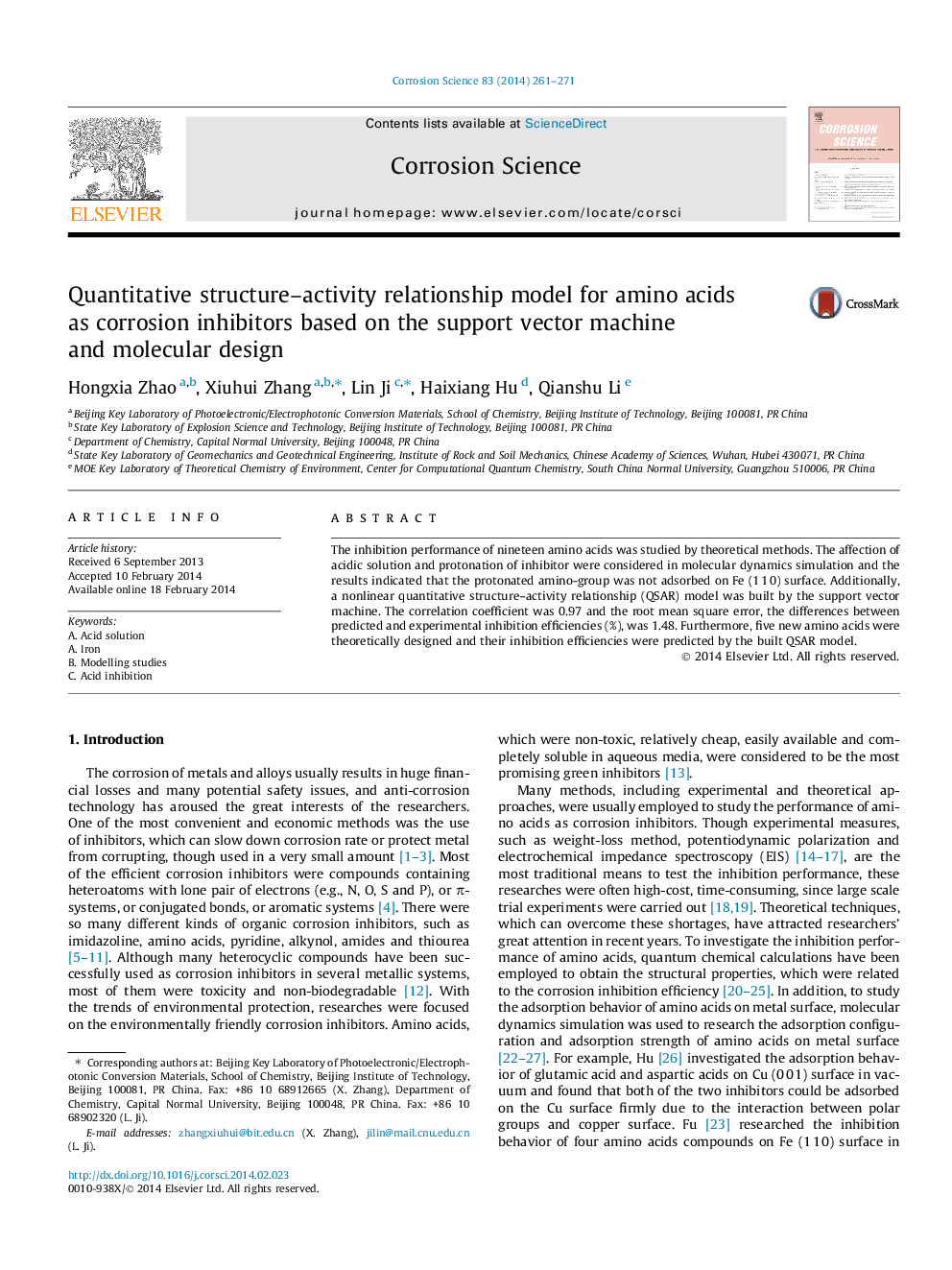| Article ID | Journal | Published Year | Pages | File Type |
|---|---|---|---|---|
| 1468893 | Corrosion Science | 2014 | 11 Pages |
•Nonlinear quantitative structure–activity relationship (QSAR) model was built by the support vector machine.•Descriptors for QSAR model were selected by principal component analysis.•Binding energy was taken as one of the descriptors for QSAR model.•Acidic solution and protonation of the inhibitor were considered.
The inhibition performance of nineteen amino acids was studied by theoretical methods. The affection of acidic solution and protonation of inhibitor were considered in molecular dynamics simulation and the results indicated that the protonated amino-group was not adsorbed on Fe (1 1 0) surface. Additionally, a nonlinear quantitative structure–activity relationship (QSAR) model was built by the support vector machine. The correlation coefficient was 0.97 and the root mean square error, the differences between predicted and experimental inhibition efficiencies (%), was 1.48. Furthermore, five new amino acids were theoretically designed and their inhibition efficiencies were predicted by the built QSAR model.
